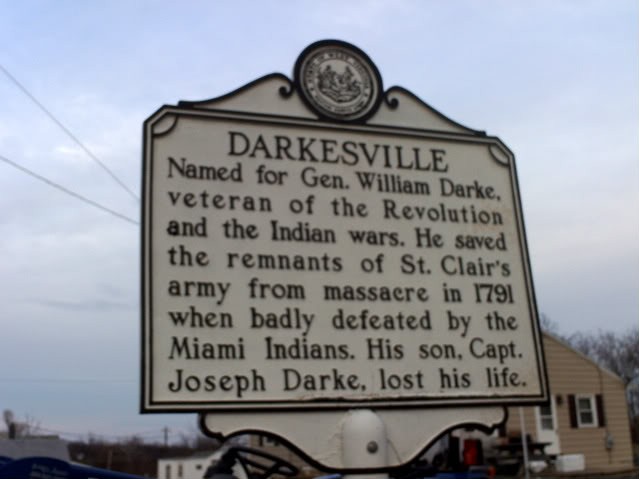Darkesville Historical District
Introduction
Text-to-speech Audio
Established in 1791, the town of Darksville, built on the land of James Buckells, is named for General William Darke, a soldier that served in both the French and Indian War and the Revolutionary War. Forty-five historical buildings are within the town's border, many of which date back to before 1810. As of 1980, Darkesville was recognized as a historic district and included in the National Register of Historic Places. There is a matter of confusion about its name, as it has been referred to as "Buckles Town" and other variations.
Images
Darksville Historical Plaque

Backstory and Context
Text-to-speech Audio
Built on the land of James Buckells in 1791, Darkesville was named after General William Darke, a Virginia military officer who took part in both the French and Indian War and the American Revolution. The name of the town has been a matter of debate as it has been known by other names, such as "Buckles Town" and other such variations.
William Darke enlisted in the British Army in 1755, briefly serving under General Braddock during the disastrous attempt to take Fort Duquesne. Also during the same war, he would be a part of a ranger company under the command of Robert Rutherford, colloquially known as Rutherford's Rangers. During the Revolution, Darke was promoted to Captain with the Continental Army and was present at Siege of Yorktown in 1781. He would end his career as a Major General.
The Darkesville Historical District is made up of forty-five historically significant buildings. Of those, twenty-five of them are log structures dating between 1780 and 1810. The remaining twenty are a combination of early stone structures and frame buildings. It was added to the National Register of Historic Places in 1980.
William Darke enlisted in the British Army in 1755, briefly serving under General Braddock during the disastrous attempt to take Fort Duquesne. Also during the same war, he would be a part of a ranger company under the command of Robert Rutherford, colloquially known as Rutherford's Rangers. During the Revolution, Darke was promoted to Captain with the Continental Army and was present at Siege of Yorktown in 1781. He would end his career as a Major General.
The Darkesville Historical District is made up of forty-five historically significant buildings. Of those, twenty-five of them are log structures dating between 1780 and 1810. The remaining twenty are a combination of early stone structures and frame buildings. It was added to the National Register of Historic Places in 1980.
Sources
National Register of Historic Places Nomination Form. National Park Service. http://www.wvculture.org/shpo/nr/pdf/berkeley/80004410.pdf.
